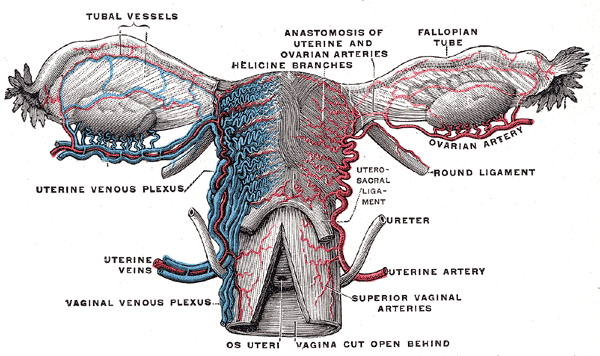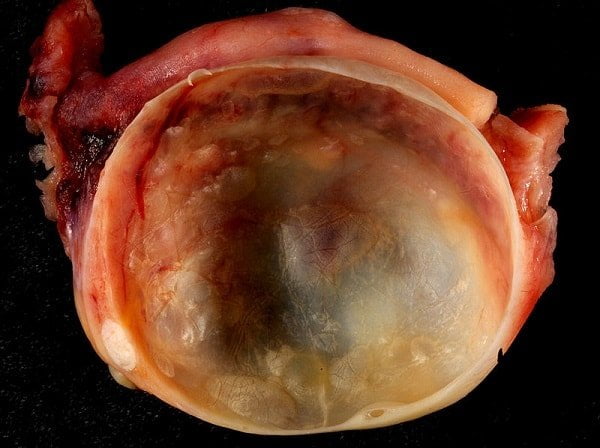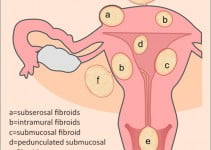Perhaps your doctor has told you that you have ovarian cysts. Or maybe you have a sister, friend, relative, or coworker who has this condition.
Either way, you’ll want to know what ovarian cysts are, why they develop, and how they can be treated — which is what we explain in this guide.
What’s an Ovarian Cyst?
An ovarian cyst is a sac that develops on the ovary, and it can be either solid or filled with fluid. Ovarian cysts are very common especially among women who still get their periods; in fact, many women develop a cyst every month as a part of their menstrual cycle.
Experts believe that most women will develop at least one cyst in their lifetime because it’s a natural part of the menstrual process. Ovarian cysts are also common among pregnant women.
In most cases, the cysts are painless and don’t result to any symptoms, and they usually go away on their own, so no treatment is needed. Because of these, a lot of women develop cysts without even knowing that they have one.
Ovarian cysts only become a problem when they don’t go away. When this happens, the cysts usually get bigger and take up more space in the abdominal cavity. They can also rupture or even cause the ovaries to get twisted. All of these can result in pain and other symptoms.
Anatomy of the Ovaries
To further understand ovarian cysts, it’s important to know the anatomy of ovaries. Barring any genetic or medical abnormality, most women are born with two ovaries, one on the right side of the uterus and another on the left.

The ovaries are small and shaped like a bean, and they’re responsible for releasing an egg every 28 days or so (depending on your menstrual cycle). The eggs are stored in individual sacs on the ovaries called follicles and, when an egg is mature enough, it bursts out of its follicle and begins its journey down the Fallopian tube.
Ovaries also secrete progesterone, which prepares the uterus for implantation and paves the way to menstruation, as well as estrogen, which is responsible for the maintenance of the vagina and the uterus.
Cysts usually don’t affect the natural processes in the ovaries, which is why women don’t experience any symptoms. However, in serious cases, cysts can interfere with the anatomy and physiology of the ovaries, which causes the patient to experience various signs and symptoms and leads to various health complications.
Types and Causes of Ovarian Cysts
Ovarian cysts can be classified according to what causes them to appear and how they develop. There are two main types of ovarian cysts: functional and non-functional.
Functional cysts develop as a natural part of the menstrual cycle. They’re the most common type of cysts, are usually harmless, and go away after a few months. They can be further categorized into two sub-types: follicular cysts and corpus luteum cysts.
Follicular cysts develop when follicle containing a mature egg doesn’t rupture and release the egg, and it eventually turns into a cyst. Corpus luteum cysts, meanwhile, develop when a follicle bursts to let out the egg but eventually seals itself off instead of regressing, trapping fluid inside it and becoming a cyst.

An ovarian cyst of most likely follicular origin
Non-functional cysts are those that are not brought about by the natural menstrual process. These include that develop due to abnormal cell growth, such as cystadenomas (which develop from ovarian tissue) and dermoid cysts (which develop from cells that form the eggs and contain hair, fat, teeth, and other tissue).
Non-functional cysts can also be caused by underlying health problems, including endometriosis and polycystic ovary syndrome (PCOS).
Most ovarian cysts are benign or non-cancerous, but a small number of cases feature cancerous cysts. The risk of developing cancerous ovarian cysts are higher among women who have gone through menopause.
Signs and Symptoms
As mentioned above, women with ovarian cysts usually don’t feel anything wrong with their body, especially if their cysts disappear after a few weeks or months. However, they can notice signs and symptoms if their cysts don’t go away and if these become bigger.
Some of the most common symptoms of ovarian cysts include bloating, swelling, or a feeling of pressure on the lower part of the abdomen, on the side where the cyst is located.
As the cysts grow bigger, they can twist the ovary, block the ovary’s blood supply, or even rupture. When these happen, you might feel sharp and severe pain on your pelvis as well as on your back and thighs.
These can be accompanied by pain during sexual intercourse, during a bowel movement, and before and/or during periods.
You might also notice that you have an increased need to urinate, have difficulty with emptying your bowels, and easily feel full even when you eat a little food.
There might likewise be changes in your menstrual cycle: your periods might be lighter or heavier than normal, or they might suddenly become irregular when you’ve had a regular cycle all your life.
If you notice the signs and symptoms above, you need to schedule an appointment with your doctor as early as possible. But, if the pain becomes sharper and more severe, you have to call 911 right away and request to be taken to the hospital as this can be a sign of more serious problems.
This is especially true if the pain is accompanied by fever, dizziness, fainting, and rapid or difficulty breathing.
Diagnosis, Treatment, and Prevention
Ovarian cysts usually get discovered during a routine pelvic examination when doctors notice a swelling in one or both ovaries. If this happens, your physician will refer you for an ultrasound test to confirm if you indeed have an ovarian cyst.
If you have concerns that the cyst could be cancerous, your doctor can arrange for blood tests to check if you have high levels of substances that are indicative of cancer.
Once it’s confirmed that you have an ovarian cyst, your doctor will decide on a treatment plan based on the size and appearance of the cyst and the signs and symptoms you experience. He’ll also take note whether you’ve been through menopause or not.
Most likely, your physician will suggest monitoring the cyst for about a year to see if it would go away on its own or not. You’ll need to go through regular ultrasound tests and blood tests to check the progress of the cyst.
If you’re experiencing pain, you’ll be prescribed with pain relievers to ease your discomfort. You might also need to take birth control pills, which will prevent new cysts from developing.
If your doctor decides that the cyst should be removed, you’ll need to undergo surgery. There are two types of surgical treatment for ovarian cysts: laparoscopy and laparotomy.
Laparoscopy is preferred for small cysts; in this procedure, your doctor will make a small incision on your abdomen, use a tiny camera to see inside, and remove the cyst using a small tool.
Laparotomy is preferred for big cysts or cancerous ones, and it involves making a large incision in your abdomen.
There’s nothing you can do to prevent ovarian cysts from developing. What you can do, though, is to practice a healthy lifestyle by eating more fruits and vegetables, exercising regularly, and getting enough sleep and rest.
You’ll also want to get regular gynecologic exams so your physician can spot any abnormalities in your reproductive system ASAP and give you the correct treatment right away.



